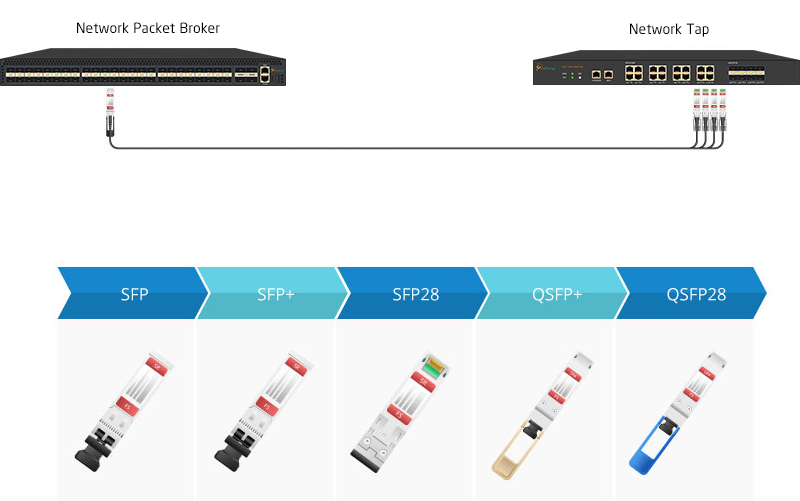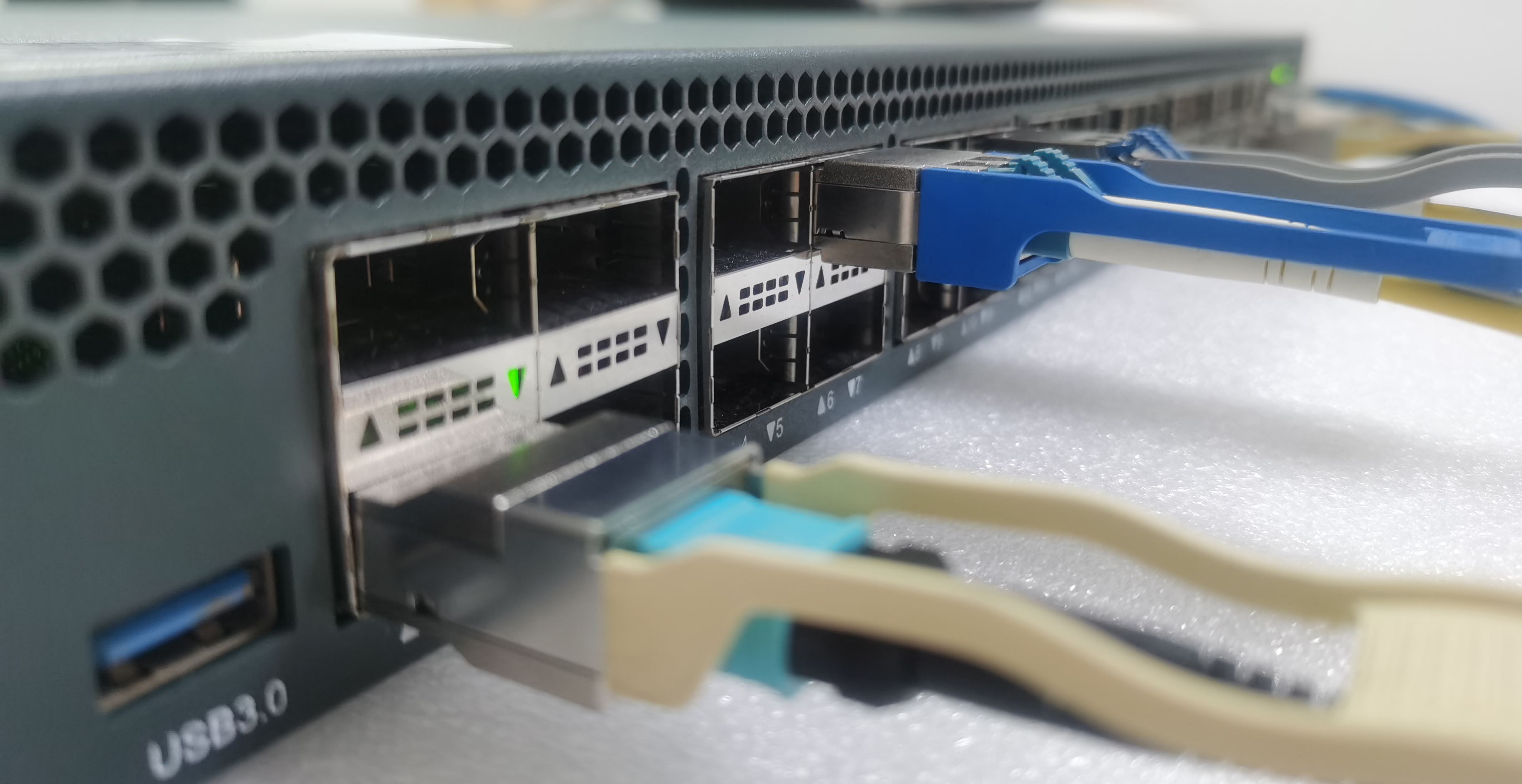A Transceiver Module, is a device that integrates both the transmitter and receiver functionalities into a single package. The Transceiver Modules are electronic devices used in communication systems to transmit and receive data over various types of networks. They are commonly used in networking equipment such as switches, routers, and network interface cards. It is used in networking and communication systems to transmit and receive data over various types of media, such as optical fibers or copper cables. The term "transceiver" is derived from the combination of "transmitter" and "receiver." Transceiver modules are widely used in Ethernet networks, Fiber Channel storage systems, telecommunications, data centers, and other networking applications. They play a crucial role in enabling reliable and high-speed data transmission over different types of media.
The primary function of a transceiver module is to convert electrical signals into optical signals (in the case of fiber optic transceivers) or vice versa (in the case of copper-based transceivers). It enables bidirectional communication by transmitting data from the source device to the destination device and receiving data from the destination device back to the source device.
Transceiver modules are typically designed to be hot-pluggable, meaning they can be inserted or removed from networking equipment without powering down the system. This feature allows for easy installation, replacement, and flexibility in network configurations.
Transceiver modules come in various form factors, such as Small Form-Factor Pluggable (SFP), SFP+, QSFP (Quad Small Form-Factor Pluggable), QSFP28, and more. Each form factor is designed for specific data rates, transmission distances, and network standards. Mylnking™ Network Packet Brokers common use this four kind of Optical Transceiver Modules: Small Form-Factor Pluggable (SFP), SFP+, QSFP (Quad Small Form-Factor Pluggable), QSFP28, and more.
Here are more details, descriptions, and differences about different types of SFP, SFP+, QSFP, and QSFP28 transceiver modules, which are widely common used in our Network Taps, Network Packet Brokers and Inline Network Bypass for your kind reference:
1- SFP (Small Form-Factor Pluggable) Transceivers:
- SFP transceivers, also known as SFPs or mini-GBICs, are compact and hot-pluggable modules used in Ethernet and Fiber Channel networks.
- They support data rates ranging from 100 Mbps to 10 Gbps, depending on the specific variant.
- SFP transceivers are available for various optical fiber types, including multi-mode (SX), single-mode (LX), and long-range (LR).
- They come with different connector types such as LC, SC, and RJ-45, depending on the network requirements.
- SFP modules are widely used due to their small size, versatility, and ease of installation.
2- SFP+ (Enhanced Small Form-Factor Pluggable) Transceivers:
- SFP+ transceivers are an enhanced version of SFP modules designed for higher data rates.
- They support data rates up to 10 Gbps and are commonly used in 10 Gigabit Ethernet networks.
- SFP+ modules are backward compatible with SFP slots, allowing for easy migration and flexibility in network upgrades.
- They are available for various fiber types, including multi-mode (SR), single-mode (LR), and direct-attach copper cables (DAC).
3- QSFP (Quad Small Form-Factor Pluggable) Transceivers:
- QSFP transceivers are high-density modules used for high-speed data transmission.
- They support data rates up to 40 Gbps and are commonly used in data centers and high-performance computing environments.
- QSFP modules can transmit and receive data over multiple fiber strands or copper cables simultaneously, providing increased bandwidth.
- They are available in various variants, including QSFP-SR4 (multi-mode fiber), QSFP-LR4 (single-mode fiber), and QSFP-ER4 (extended reach).
- QSFP modules have an MPO/MTP connector for fiber connections and can also support direct-attach copper cables.
4- QSFP28 (Quad Small Form-Factor Pluggable 28) Transceivers:
- QSFP28 transceivers are the next generation of QSFP modules, designed for higher data rates.
- They support data rates up to 100 Gbps and are widely used in high-speed data center networks.
- QSFP28 modules offer increased port density and lower power consumption compared to previous generations.
- They are available in various variants, including QSFP28-SR4 (multi-mode fiber), QSFP28-LR4 (single-mode fiber), and QSFP28-ER4 (extended reach).
- QSFP28 modules use a higher modulation scheme and advanced signal processing techniques to achieve higher data rates.
These transceiver modules differ in terms of data rates, form factors, supported network standards, and transmission distances. SFP and SFP+ modules are commonly used for lower-speed applications, while QSFP and QSFP28 modules are designed for higher-speed requirements. It's important to consider the specific network needs and compatibility with networking equipment when selecting the appropriate transceiver module.
Post time: Nov-27-2023






